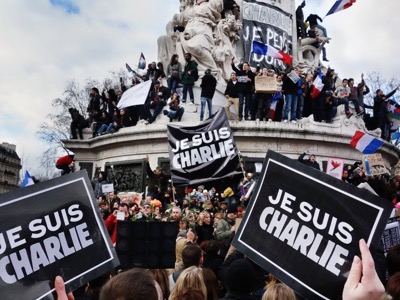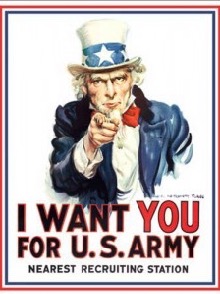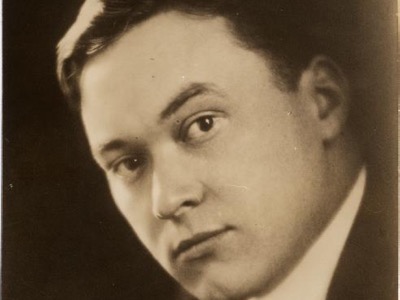The Techniques of Modern Military Propaganda
Propaganda is a military technique which should be distinguished from strategic subterfuge. The former seeks to trick one’s own side, generally in order to garner support. The latter, whose antique archetype is the Trojan horse, aims to damage the adversary. As is often the case, this military technique has known many civil applications, in the commercial as well as the political sector.
While at first, the monarchic and oligarchic régimes were satisfied with making a display of their power, particularly through ceremonials and public architecture, the democratic régimes, as soon as they appeared, incited propaganda. Thus, the Athenian democracy favoured Sophism, in other words, a school of thought which attempted to present any presupposition as logical.
In the 16th century, a commercial family, the Medicis, imagined a way of re-writing its history and inventing a patrician origin for itself. To do so, it used «artistic patronage», soliciting the greatest artists of their country to materialise these lies through their works.
Later on, while religious wars were becoming generalised in Europe, Pope Gregory XV, facing the breakthrough of Protestantism, created a Ministry («dicastery») to defend and extend the Catholic faith. This was the Congregation for the Propagation of the Faith («Congregatio de Propaganda Fide»), which is the origin of the word « propaganda ».

In January 2015, following the assassination of the cartoonists from Charlie-Hebdo, an administrator of Reporters Sans Frontières, Joachim Roncin, launched the slogan «Je suis Charlie». It was immediately adopted as a means for the individual to melt into the crowd, and then used at the occasion of every terrorist attack (for example, «Je suis Bruxelles» after the attacks of March 2016). Individuals who refused to adopt the slogan were accused of deviance and «conspiracism».
Propaganda in the industrial era
The industrial era provoked a massive rural exodus, the creation of vast urban groupings and the pooling of the working class. While the «masses» entered politics, the French sociologist Gustave Le Bon studied the psychology of «crowds», in other words, the infantilisation of the individual as part of a large group. By doing so, he identified the basic principle of modern propaganda – in order to be manipulable, the individual must first be submerged in the crowd.
 At the beginning of the First World War, in September 1914, the British secretly created the Bureau of War Propaganda («Wellington House») as a branch of the Ministry for Foreign Affairs. Re-adopting the model of the Medicis, they recruited the great writers of the time – such as Arthur Conan Doyle, H.G. Wells or Rudyard Kipling – to publish texts attributing imaginary crimes to the German enemy, and also painters,who would render them in the form of images. They then also recruited the heads of the main daily newspapers – The Times, Daily Mail, Daily Express, Daily Chronicle – to ensure that these dailies would publicise their falsifications.
At the beginning of the First World War, in September 1914, the British secretly created the Bureau of War Propaganda («Wellington House») as a branch of the Ministry for Foreign Affairs. Re-adopting the model of the Medicis, they recruited the great writers of the time – such as Arthur Conan Doyle, H.G. Wells or Rudyard Kipling – to publish texts attributing imaginary crimes to the German enemy, and also painters,who would render them in the form of images. They then also recruited the heads of the main daily newspapers – The Times, Daily Mail, Daily Express, Daily Chronicle – to ensure that these dailies would publicise their falsifications.
This model was then used by President Woodrow Wilson, who created, in April 1917, the Committee on Public Information. This organisation is famous for having employed thousands of local leaders to spread the government gospel (the «Four Minute Men»). It developed visual propaganda by forming a department dedicated to the creation of posters, which produced in particular the famous «I want you !» image. Another group also attempted to produce films. Above all, instead of recruiting famous writers, it gathered a group of psychologists and journalists around Edward Bernays (Sigmund Freud’s nephew) and Walter Lippmann – the group was charged with inventing extraordinary, terrible and edifying stories on a daily basis, which they would then publish with the collaboration of the Press moguls. In this way, the orientation given by Power to artists was replaced by «storytelling», fabricated systematically according to scientific rules.

Having directed US propaganda during the First World War, Walter Lippmann had convinced himself that people are largely manipulable. For him, democracy was thus impossible unless it was considered to be a deception aimed at fabricating public consent.
While the Anglo-Saxons aimed only at striking the imagination and making adhesion to the war a popular trend, the Germans were experimenting with the means of forcing people to participate in the imaginary stories they were being told. They made a wide-spread use of uniforms, which enabled the individual to play a role, and organised grandiose spectacles – political and sporting events – which presented the opinion of the majority. This was, without doubt, the moment when «modern propaganda» was invented – in other words, the dissemination of beliefs which could not be criticised, and which could not be doubted. The individual who had participated in a black uniform marching in torchlight parades could no longer question his Nazi beliefs without questioning himself and having to rethink his past and his vision of the future. Joseph Goebbels instituted a daily briefing at the Ministry of Information during which he defined the «elements of language» that the journalists were ordered to use. It was not simply a question of convincing people, but modifying the crowds’ references. In addition, the Germans were the first to master the new means of communication, radio, and the cinema. Thus, they invited themselves into peoples’ homes by installing television.
Goebbels considered the art of propaganda as a combat against individuality. He underlined the importance of repetition and «brainwashing» to overcome intellectual resistance. This was even more important in that the use of television brought the crowd to the individual.
At the end of the Second World War, the UN General Assembly, under the insistence of the USSR and France, adopted a series of resolutions (n° 110 [1], 381 [2] and 819 [3]) which forbade propaganda, and guaranteed the access to contradictory information. Each member state wrote these principles into their own national law. But in general, legal proceedings against propaganda can only be initiated by the public Ministry, in other words, the state, while propaganda is first of all practiced by the state. So nothing changed.
During the Cold War, the United States and the Soviets were rivals in matters of propaganda. Contrary to a widely-accepted idea, the USSR made few innovations, except in matters of the re-writing of History. By retouching official photographs, they wiped out one current of thought or another and «disappeared» the leaders who represented them. As for the United States, they developed radio broadcasts aimed at the Soviets (Radio Free Europe) and others aimed at the Allies (Hollywood). At the same time, they innovated by creating permanent organisations and «think-tanks» – allegedly private and scientific – charged with the a posteriori justification of public policy. As their name indicates, the purpose of these groups is not to study and offer propositions, as university teachers do, but to test the arguments in the Sophist sense of the term.
More interestingly, when faced with nationalist insurrections in the Third World, the US Army employed propaganda techniques to intimidate the Communist rebels and maintain the neo-colonial régimes. Until then, psychological warfare had worked to make the enemy believe that they could not trust their leaders, and should accept defeat as inevitable. For example, in the Philippines, General Edward Lansdale invented and staged a mythological monster which haunted the forest and devoured human beings. In this way, he discouraged the population from going to the help of resistants who were hiding in the forest.
Propaganda in the satellite and digital age
Three phenomena have been combined over the last twenty-five years – the entertainment industry, satellites, and the arrival of digital technology.
1- The entertainment industry
Since television is a spectacle, propaganda first of all supposes the organisation of spectacular events.
In 2013, the United Kingdom created InCoStrat, a communications company in the service of the jihadist groups. It designed logos, made video clips by a portable telephone, and printed brochures for a hundred of these groups, thus giving the impression of a popular uprising against the Republic. For example, together with the SAS, it made a spectacle of the most important group, Jaysh al-Islam (Army of Islam). Saudi Arabia supplied the tanks which were delivered from Jordan. Uniforms were made in Spain and distributed to the jihadists for an officer promotion ceremony. All this was choreographed and filmed by professionals in order to give the impression that the army was organised like regular forces and was capable of rivaling with the Syrian Arab Army [14]. The idea was planted that this really was a civil war, and yet the images only showed a few hundred extras, most of whom were foreigners.
Notes
[1] « Mesures à prendre contre la propagande en faveur d’une nouvelle guerre et contre ceux qui y incitent », Réseau Voltaire, 3 novembre 1947.
[2] « Condamnation de la propagande contre la paix », Réseau Voltaire, 17 novembre 1950.
[3] « Renforcement de la paix par la suppression des obstacles au libre échange des information et des idées », Réseau Voltaire, 14 décembre 1954.
[4] « La chute de statue de Saddam Hussein », par Jean-Sébastien Farez,Réseau Voltaire, 15 avril 2003.
[5] « L’effet CNN », par Thierry Meyssan, Réseau Voltaire, 19 mai 2003.
[6] “Tienanmen 20 anni dopo”, Domenico Losurdo, Rete Voltaire, 9 giugno 2009.
[7] “Wadah Khanfar, Al-Jazeera and the triumph of televised propaganda”, by Thierry Meyssan, Voltaire Network, 26th September 2011.
[8] “NATO preparing vast disinformation campaign”, by Thierry Meyssan,Komsomolskaïa Pravda (Russia) , Voltaire Network, 11 June 2012.
[9] “Behind the 2009 Nobel Peace Prize”, by Thierry Meyssan, Voltaire Network, 19th October 2009.
[10] « Un réseau militaire d’intoxication », Réseau Voltaire, 8 décembre 2003.
[11] «Islamistas libios se desplazan a Siria para “ayudar” a la revolución», por Daniel Iriarte, ABC (España), Red Voltaire , 19 de diciembre de 2011.
[12] “The journalist-combatants of Baba Amr”, by Thierry Meyssan,Voltaire Network, 4 March 2012.
[13] “The Burial Brigade of Homs: An Executioner for Syria’s Rebels Tells His Story”, Ulrike Putz, Der Spiegel, March 29th, 2012.
[14] « Comment le Royaume-Uni met en scène les jihadistes », Réseau Voltaire, 13 mai 2016.
The post The Techniques of Modern Military Propaganda appeared first on LewRockwell.
Leave a Reply